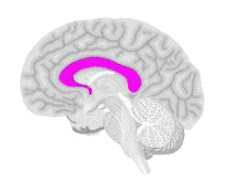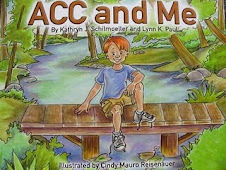GUEST BLOG POST
From the Beginning
by Alexandra Berube, bostontutoringservices.com
It was my second year as a Kindergarten classroom teacher and I had worked with students with learning disabilities before, as well as behavioral problems, but this was definitely a new frontier. I read through the packet, which outlined the deficits that children with this condition may expect to experience. Basically, the student could develop anywhere between completely normally and profoundly mentally retarded. The paperwork literally said it could be anywhere between those two extremes.
I have to admit, I was a little scared. This student would be under my care for the year in which he was expected to learn to read and write, socialize, develop fine motor skills and pencil grip, and a host of other core curriculum subjects. I had a lot of responsibility for the growth of this child, and I did not have an aide or support system to guide me through this process.
And so I started at the beginning. Max quickly began receiving services for OT [Occupational Therapy], which was a remarkable help, as this therapist was able to give me some guidelines on how to instruct Max on handwriting skills while his fine motor skills started to develop. The first month of kindergarten, Max could not make any representational symbols. He could not draw a line, he could not draw a circle, and he certainly could not draw a letter. The OT gave him a lot of great tools, like a special pencil grip that strongly corrected finger placement for writing.
In math, Max began to develop numeracy skills, starting with one-to-one counting relationships (you have to count each object only once, without recounting any objects--this requires strategy and memory). We worked on finding tangible ways for Max to keep track of what he had counted, including drawing dots each time we counted an object--count, draw a dot, count, draw a dot. Of course, the dots became huge inky pools on the page, and he would get distracted as he drew them, but I soon learned that the only way for him to keep track of his math reasoning was to use tangible objects at all times.
With all students, we use these strategies, including manipulatives as well. But Max was not maturing past this level in his ability to retain the skills without physical representation. Other students would begin to visually group objects, maybe counting two at a time, or gain the ability to count without drawing dots to keep track (which is really a scaffolding activity that they should grow out of relatively early in kindergarten). Max needed to double-check his counting every single time, and this became very frustrating for him. He would lose focus, and his behavior would quickly decline.
Max’s behavior while doing tasks that challenged him added another element to the difficulty of instruction. As soon as he got bored, which was very quickly, he would slide off his chair, crawl on the ground, throw the pencil, anything to get out of sitting at a table. And so we would stand by the table, we would walk around the table--I would find any way I could to have him physically touch what we were working on in one finite area. I would break up the activities into shorter and shorter increments. But I never let him get away with not trying.
In later blog posts, I will further describe Max's math development, as well as his literacy development throughout the years. But I think more than anything at this time, it is important to discuss a teacher's role in handling behavior issues in students who are struggling academically, whether they have special needs or not.
You can never, NEVER, let the child think you are giving up on them. If they suspect you think they can't do something, they'll have no incentive to try. I always made sure I held Max accountable for his work, even if his work was completely different than what the other students were doing. He could take breaks, he could work standing up, but he was not an exemption to the basic rules of the classroom, and when he would act out, I made it clear that as soon as he was done he would be getting back to work. He could not distract me from the task at hand, even if that was his goal.
I look forward to continuing to share my experiences working with this extraordinary student, who is now in third grade, performing in all subject levels on grade level. He has made me proud in innumerable ways since I have known him, and I look forward to sharing our experiences with readers.
When working with a student with such a rare condition as Agenesis of the Corpus Callosum, it's hard to know what to expect in terms of their learning abilities and how each skill will develop over time. When Max* joined my classroom in the fall of 2008, his mother handed me a packet of materials on ACC and asked me to read them.
About Alexandra Berube

Alexandra is the Managing Director of Boston Tutoring Services, a tutoring company that offers one-to-one in-home tutoring in Massachusetts. She is also a former Kindergarten teacher who also tutors students in grades
K-8, in all subject areas, including test preparation.
Would you like to have a print copy of this article?
Alexandra has given me permission to convert her article to a pdf format, which you can access by clicking on the link below:
From the Beginning - printable version
Exciting News!!
Watch for another upcoming guest post from Alexandra, regarding the student she taught (and tutored) who has Agenesis of the Corpus Callosum, which will be posted here on this blog next week.
As a teacher and professional tutor, Alexandra plans to share several more future guest blog posts here--where she will reveal additional insight into her student who has Agenesis of the Corpus Callosum and how it affects the student's education, and she will also be sharing teaching strategies that have helped her student.**
In a recent e-mail exchange I asked Alexandra a question regarding her student and communication, which I am sharing here with you:
"You mentioned that the student with ACC was nonverbal in Kindergarten--and I became curious (as I am sure other parents will be) about his communication needs in the school setting (and in your classroom) and how they were met. With the range of effects of ACC being so broad, there are some children who are nonverbal, some who are verbal, some who are verbal but who have varying degrees of speech/language issues, and some who use gestures, sign language, augmentative communication and/or some verbal words. I am making an assumption that possibly the student's main form of communication now, as a 3rd grader, is verbal?"
I'm including Alexandra's reply here (with permission), for you to read:
"I'll send you something this week about his verbal skills--he wasn't actually nonverbal in that he couldn't speak, he just chooses not to a lot (to this day). He uses hand gestures, and we constantly ask him to use his words. He can speak very well and has an extensive vocabulary, and actually has for some time, because he loves to read. But he is frugal with his words when he wants to be, especially if he's not enjoying a task."
Alexandra Berube's first blog post article can be found here.
**Please Note: Agenesis of the Corpus Callosum has a very wide range of effects--ranging anywhere from no symptoms--or mild learning disabilities--to severe mental and/or physical challenges. It can sometimes also be seen with other medical conditions, genetic syndromes, chromosomal anomalies and more. Every person with ACC can present differently in terms of their development, cognitive abilities and educational needs.
Each child who has ACC is a unique individual with their own abilities, weaknesses, challenges, motivations, strengths, as well as their own style of learning.
























No comments:
Post a Comment
I am very interested in reading your comments and
look forward to hearing from you. Thank you.